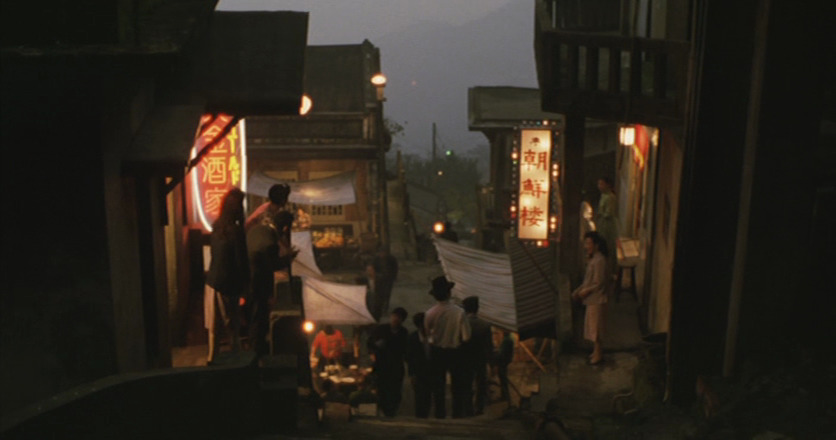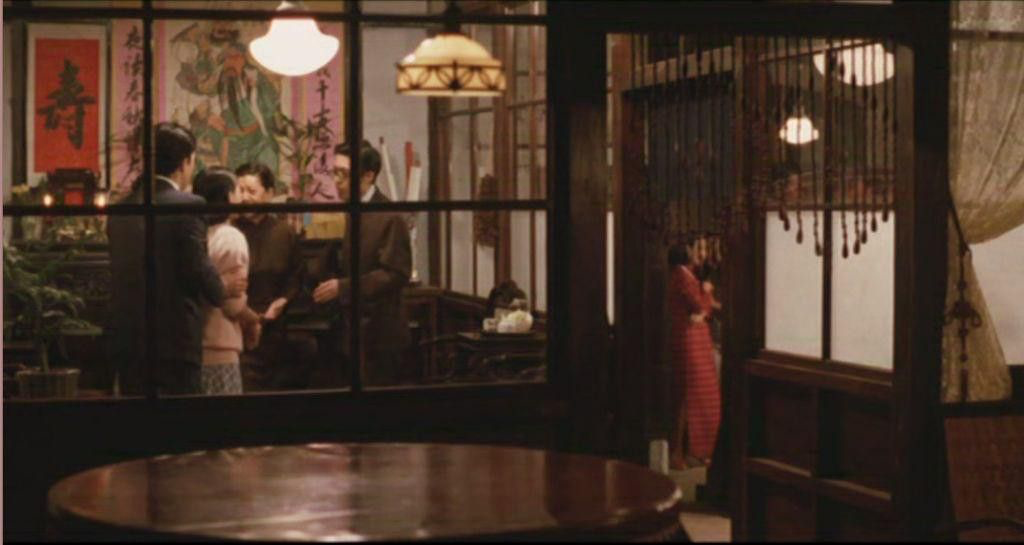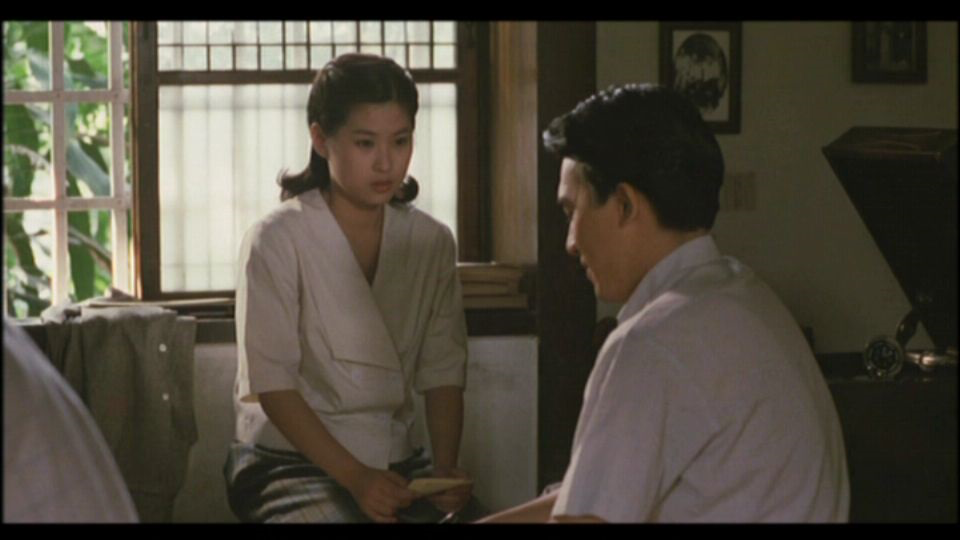One film that has profoundly impacted my understanding of visual narrative is Hou Hsiao-Hsien’s 1989 masterpiece, “A City of Sadness.” Renowned for its poignant depiction of Taiwan’s turbulent history and its distinctive visual style, this film stands as a seminal work in Taiwanese cinema. In this analysis, I delve into the cinematographic elements that make “A City of Sadness” a remarkable piece of art.
About the Cinematographer
The cinematography of “A City of Sadness” is a masterful collaboration with Chen Huai-en, a prominent Taiwanese cinematographer known for his minimalist and observational style. Chen has worked with esteemed directors like Hou Hsiao-Hsien and Edward Yang, contributing significantly to the Taiwan New Wave Cinema movement. His approach is characterized by a naturalistic aesthetic, emphasizing ambient lighting and meticulous composition to enhance storytelling. In this film, Chen’s restrained yet evocative visual language aligns perfectly with Hou’s directorial vision, portraying Taiwan’s tumultuous historical context without resorting to melodrama. His focus on static shots, long takes, and a sense of distance offers a meditative experience, allowing viewers to immerse themselves in the narrative’s emotional depth.
Inspiration for the Cinematography of “A City of Sadness”

The visual style of “A City of Sadness” reflects Hou Hsiao-Hsien’s admiration for silent films and his preference for a storytelling approach that eschews overt dramatization. Drawing inspiration from traditional Chinese painting and photography, the cinematography aims to mirror the contemplative nature of Chinese landscape paintings. This stylistic choice is instrumental in reflecting the cultural and historical essence of Taiwan during the late 1940s, particularly the 228 Incident and the subsequent White Terror period.
🎬 A Note from Salik:
I often get asked how I achieve the dense, filmic look in my commercial work. The secret isn't just color grading—it's the starting point. I have finally released my personal Master LUT Pack—8 distinct looks based on real film.
These aren't simple presets; they were crafted using complex math, empirical data, and precise tetrahedral operations to ensure technical integrity. This is the exact collection I've built over the years and used on 200+ high-end commercials.
*Compatible with Davinci Resolve, Premiere Pro, and FCPX.
Chen Huai-en captures this historical atmosphere by crafting visuals that feel both intimate and detached, evoking a sense of surveillance and unease. The distant framing and prolonged shots emphasize the collective trauma experienced by families rather than focusing solely on individual characters. This aligns with Hou’s broader aim: to depict history as experienced by ordinary people—fragmented and incomplete, much like the memories passed down through generations.
Camera Movements Used in “A City of Sadness”

One of the most notable aspects of the film’s cinematography is its lack of dynamic camera movements. The majority of shots are static, often resembling still photographs, which creates a sense of stillness and contemplation. With 222 shots over a runtime of 158 minutes, the average shot length is approximately 43 seconds. This deliberate choice emphasizes the gravity of each moment, encouraging me as a viewer to engage deeply with the composition and context of every frame.
When movement does occur, it is minimal—gentle pans or subtle tilts used sparingly and with purpose. These movements often occur during moments of violence or heightened tension, guiding the viewer’s attention without disrupting the scene’s natural rhythm. For instance, the static framing of a violent ambush contrasts starkly with the fluid, chaotic motion typically seen in action sequences. This restrained approach mirrors the characters’ internalized suffering, allowing the audience to feel the weight of oppression without the distraction of cinematic spectacle.
Compositions in “A City of Sadness”

The compositions in “A City of Sadness” are meticulously crafted to evoke a sense of detachment and voyeurism. Chen often utilizes wide shots that incorporate multiple elements within the frame, allowing for a layered narrative where the foreground and background interact to provide context and depth. Characters are frequently framed at a distance, with objects like doorways, windows, or other barriers partially obstructing the view. This stylistic choice creates a feeling of being an outsider looking in, reflecting the pervasive atmosphere of mistrust and surveillance during the White Terror period.
Scenes often resemble tableaux, with characters positioned within static, symmetrical frames. The dinner table scenes are particularly striking; instead of immersing the viewer in the conversation, the camera remains at a distance, as if I am eavesdropping from another table. This approach underscores the fear of being watched, a central theme of the film. The use of negative space and the deliberate positioning of characters within the frame convey isolation and the weight of historical events.
Lighting Style of “A City of Sadness”

The lighting in “A City of Sadness” is understated yet profoundly effective. Natural light dominates the film, with a focus on soft, diffused tones that lend the visuals a timeless, almost painterly quality. This naturalistic approach enhances the film’s realism and immerses the audience in the period setting. Indoor scenes are often dimly lit, with light filtering through windows or doorways, creating a sense of isolation and confinement.
This use of natural light serves a dual purpose: it enhances the realism of the setting while also symbolizing the fragility of hope amidst pervasive darkness. Shadows play a significant role in emphasizing the uncertainty and fear that define the characters’ lives. The interplay of light and shadow not only adds depth to the compositions but also reflects the moral and emotional ambiguity of the historical period. In interior scenes, the subtle lighting highlights the emotional states of the characters, adding depth and texture to the narrative.
Lensing and Blocking in “A City of Sadness”
The film’s lensing choices amplify its observational quality. Long lenses are frequently used to compress space, creating a sense of intimacy even when the camera remains physically distant from the characters. This technique blurs the line between the observer and the observed, aligning my perspective with that of the characters, who live under constant scrutiny.
Blocking in the film is equally deliberate. Characters often move within the frame rather than being followed by the camera. This static approach to blocking enhances the film’s theatrical quality, making each scene feel like a stage play where the audience is seated far from the action. The deliberate positioning of actors within the frame and their movements through the space convey underlying tensions and connections. This distance underscores the idea that history unfolds beyond individual control, with personal lives often reduced to background noise amidst larger societal events.
Color of “A City of Sadness”
The color palette of “A City of Sadness” is subdued and earthy, dominated by muted greens, browns, and grays. This desaturated aesthetic reflects the bleakness of the historical period while grounding the film in a sense of realism. The restrained use of color also serves as a metaphor for the suppressed emotions and muted voices of the characters.
Occasionally, the film employs subtle pops of color to draw attention to specific moments or emotions. For instance, the red of blood stands out starkly against the otherwise muted backdrop, underscoring the violence that disrupts the characters’ lives. Similarly, the soft hues of traditional Taiwanese clothing and architecture evoke a sense of cultural heritage, juxtaposing the personal against the political. This restrained use of color enhances the realism and supports the narrative’s focus on the characters’ experiences.
Technical Aspects of “A City of Sadness”
On a technical level, “A City of Sadness” is a remarkable achievement in its use of static, long takes to tell a complex narrative. The film was shot on 35mm film, standard for the time, which contributes to its naturalistic look. The choice of film stock and lenses was influenced by the desire to achieve image clarity and a depth of field that supports the film’s visual storytelling.
The editing is minimalist, with cuts used sparingly to preserve the continuity and integrity of each scene. This editing style challenges the audience to remain attentive, rewarding patience with an immersive experience. The sound design further enhances the film’s realism. Ambient sounds—footsteps, the hum of conversations, the rustling of leaves—are meticulously captured, grounding me in the physical world of the characters. Dialogue is often delivered in hushed tones, emphasizing the intimacy of private moments amidst the public chaos.
Hou Hsiao-Hsien’s decision to frame the narrative through the lens of a deaf character adds another layer of technical brilliance. The use of title cards and written notes creates a silent film-like atmosphere, inviting the audience to engage with the visual storytelling on a deeper level. This technique not only pays homage to the silent film era but also reinforces the theme of communication—or the lack thereof—during times of political repression.
- Also Read: CINEMATOGRAPHY ANALYSIS OF A BRIGHTER SUMMER DAY
- Also Read: CINEMATOGRAPHY ANALYSIS OF PATHS OF GLORY (IN DEPTH)
Browse Our Cinematography Analysis Glossary
Explore directors, cinematographers, cameras, lenses, lighting styles, genres, and the visual techniques that shape iconic films.
Explore Glossary →